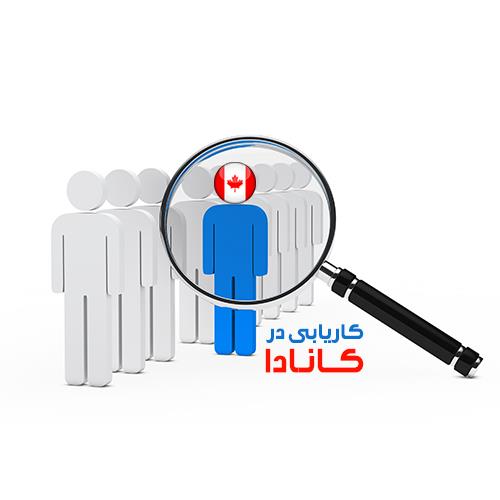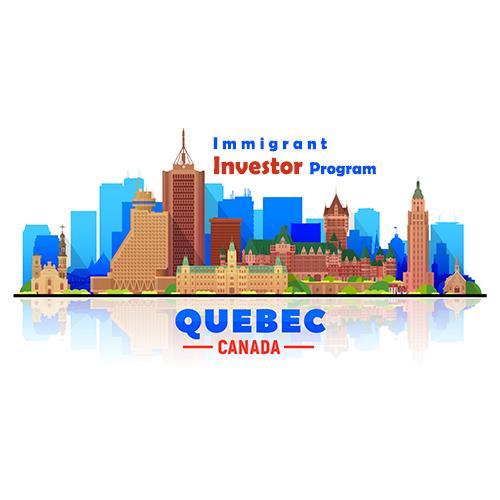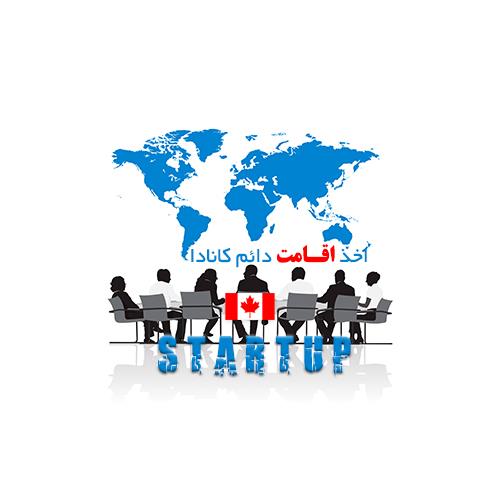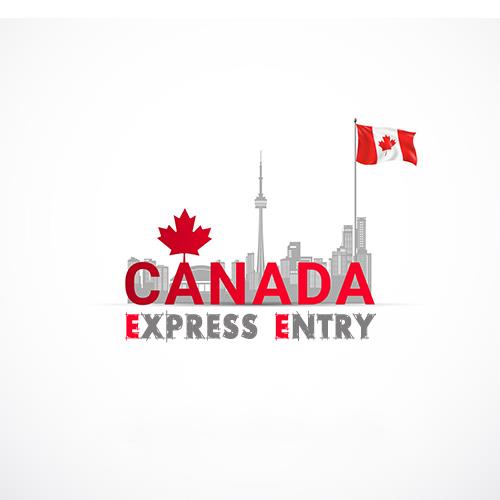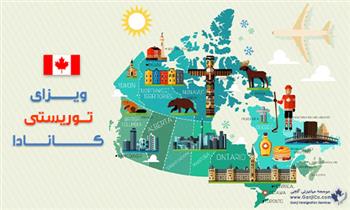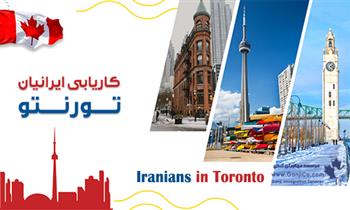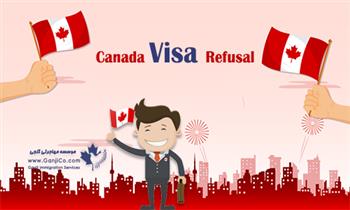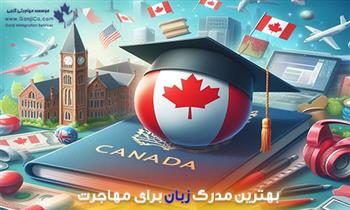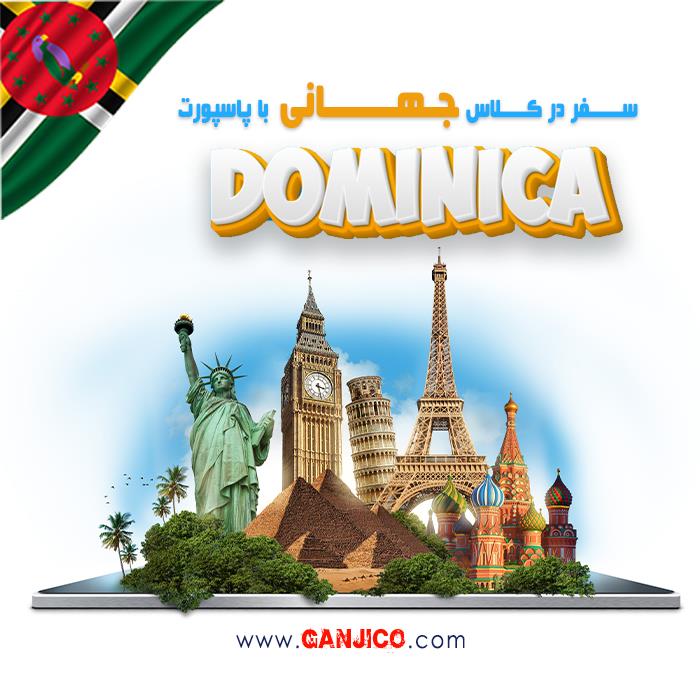
Capital: Ottawa
Most Populous City (Largest City): Toronto
Official Language: English-French
Government: Federal Monarchy, Parliamentary System
Monarch: Elizabeth II
Governor-General: David Lloyd Johnston
Prime Minister: Stephen Harper
Total Area: 9,984,670 km2
Currency: Canadian Dollar
Population: 35,675,834
Time Difference between Iran and Canada: -8:30
National Anthem:
O Canada!
Our home and native land!
True patriot love in all thy sons command.
With glowing hearts we see thee rise,
The True North strong and free!
From far and wide,
O Canada, we stand on guard for thee.
God keep our land glorious and free!
O Canada, we stand on guard for thee.
O Canada, we stand on guard for thee.
Canada
Canada is a country in the northern part of North America consisting of ten provinces and three territories. Canada is the world's second-largest country by total area and the fourth-largest country by land area. It extends from the Atlantic to the Pacific and northward into the Arctic Ocean.
Canada has been inhabited for millennia by Aboriginal peoples until the late 15th century, British and French populations were established on the Atlantic coast regions. Canada was under administration of French government until 1713. The United Kingdom gained and lost North American territories as a result of various conflicts, until left in the late 18th century. On July 1867, three populations joined to form the independence federal government of Canada. In 19th century Canada attained its independence and full sovereignty.
Canada is a democratic constitutional monarchy, with a Sovereign as head of State and an elected Prime Minister as head of Government. Canada has a federal system of parliamentary government, where federal, provincial and territorial governments share government responsibilities and functions. Queen Elizabeth is the current head of state. The Parliament of Canada is the legislative body of the Government of Canada. The Parliament is composed of the House of Commons (lower house), the Senate (upper house), and the Sovereign, represented by the Governor General.
The country is officially bilingual at the federal level. It is one of the world's most ethnically diverse and multicultural nations, the product of large-scale immigration from many countries, with a population of approximately 35 million as of December 2012. According to statics reported in 2011, 163,290 of Canadian citizens are Iranians.
Canada is a developed country and one of the wealthiest in the world, with the eighth highest per capita income globally, and the eighth highest ranking in the Human Development Index.
Ottawa is the capital of Canada where the parliament of Canada and governor general’s domicile is located. The city is the second highest quality of living of any large city in the Americas, and 14th highest in the world. It is also rated the second cleanest city in Canada, and third cleanest city in the world.
Name of Canada
The name Canada comes from the word kanata, meaning "village" or "settlement". In 1535, native inhabitants of the present-day Quebec City region used the word to direct French explorer Jacques Cartier to the village of Stadacona. Cartier later used the word Canada to refer not only to that particular village, but the entire area subject to Donnacona. Upon Confederation in 1867, Canada was adopted as the legal name for the new country, and the word Dominion was conferred as the country's title.
History of Canada
The first inhabitants of Canada were native Indian peoples, primarily the Inuit (Eskimo). The Norse explorer Leif Eriksson probably reached the shores of Canada (Labrador or Nova Scotia) in 1000, but the history of the white man in the country actually began in 1497, when John Cabot, an Italian in the service of Henry VII of England, reached Newfoundland or Nova Scotia. Canada was taken for France in 1534 by Jacques Cartier. The actual settlement of New France, as it was then called, began in 1604 at Port Royal in what is now Nova Scotia; in 1608, Quebec was founded. France's colonization efforts were not very successful, but French explorers by the end of the 17th century had penetrated beyond the Great Lakes to the western prairies and south along the Mississippi to the Gulf of Mexico. Meanwhile, the English Hudson's Bay Company had been established in 1670. Because of the valuable fisheries and fur trade, a conflict developed between the French and English; in 1713, Newfoundland, Hudson Bay, and Nova Scotia (Acadia) were lost to England. During the Seven Years' War (1756–1763), England extended its conquest, and the British general James Wolfe won his famous victory over Gen. Louis Montcalm outside Quebec on Sept. 13, 1759. The Treaty of Paris in 1763 gave England control.
Government of Canada
Canada is a parliamentary democracy: its system of government holds that the law is the supreme authority. The Constitution Act, 1867, which forms the basis of Canada’s written constitution, provides that there shall be one Parliament for Canada, consisting of three distinct elements: the Crown, the Senate and the House of Commons. However, as a federal state, responsibility for lawmaking in Canada is shared among one federal, ten provincial and three territorial governments.
The power to enact laws is vested in a legislature composed of individuals selected to represent the Canadian people. Hence, it is a “representative” system of government. The federal legislature is bicameral: it has two deliberative “houses” or “chambers” — an upper house, the Senate, and a lower house, the House of Commons. The Senate is composed of individuals appointed by the Governor General to represent Canada’s provinces and territories. Members of the House of Commons are elected by Canadians who are eligible to vote. The successful candidates are those who receive the highest number of votes cast among the candidates in their electoral district in this single-member, simple-plurality system.
Canada is also a constitutional monarchy, in that its executive authority is vested formally in the Queen through the Constitution. Every act of government is carried out in the name of the Crown, but the authority for those acts flows from the Canadian people. The executive function belongs to the Governor in Council, which is, practically speaking, the Governor General acting with, and on the advice of, the Prime Minister and the Cabinet.
Political parties play a critical role in the Canadian parliamentary system. Parties are organizations, bound together by a common ideology, or other ties, which seek political power in order to implement their policies. In a democratic system, the competition for power takes place in the context of an election.
Finally, by virtue of the Preamble to the Constitution Act, 1867, which states that Canada is to have “Constitution similar in Principle to that of the United Kingdom”, Canada’s parliamentary system derives from the British, or “Westminster”, tradition. The Canadian system of parliamentary government has the following essential features:
Parliament consists of the Crown and an upper and lower legislative Chamber;
Legislative power is vested in “Parliament”; to become law, legislation must be assented to by each of Parliament’s three constituent parts (i.e., the Crown, the Senate and the House of Commons);
Members of the House of Commons are individually elected to represent their constituents within a single electoral district; elections are based on a single-member constituency, first-past-the-post or simple-plurality system (i.e., the candidate receiving more votes than any other candidate in that district is elected);
Most Members of Parliament belong to and support a particular political party;
The leader of the party having the support of the majority of the Members of the House of Commons is asked by the Governor General to form a government and becomes the Prime Minister;
The party, or parties, opposed to the government is called the opposition (the largest of these parties is referred to as the “official” opposition);
The executive powers of government (the powers to execute or implement government policies and programs) are formally vested in the Crown, but effectively exercised by the Prime Minister and Cabinet, whose membership is drawn principally from Members of the House belonging to the governing party;
The Prime Minister and Cabinet are responsible to, or must answer to, the House of Commons as a body for their actions; and
The Prime Minister and Cabinet must enjoy the confidence of the House of Commons to remain in office. Confidence, in effect, means the support of a majority of the House.
Geography of Canada
Canada is the world's second largest country in total area. Canada occupies a major northern portion of North America, sharing land borders with the contiguous United States to the south (the longest border between two countries in the world) and the US state of Alaska to the northwest. Canada stretches from the Atlantic Ocean in the east to the Pacific Ocean in the west; to the north lies the Arctic Ocean Greenland is to the northeast, while Saint Pierre and Miquelon is south of Newfoundland.
Covering 9,984,670 km2, Canada is slightly less than three-fifths as large as Russia and slightly larger than Europe. In total area, Canada is slightly larger than both the U.S. and China; however, Canada ranks fourth in land area (i.e., total area minus the area of lakes and rivers)
The population of Canada, some 34,980,000 as of November 2012, is concentrated in the south in proximity to its border with the contiguous U.S.
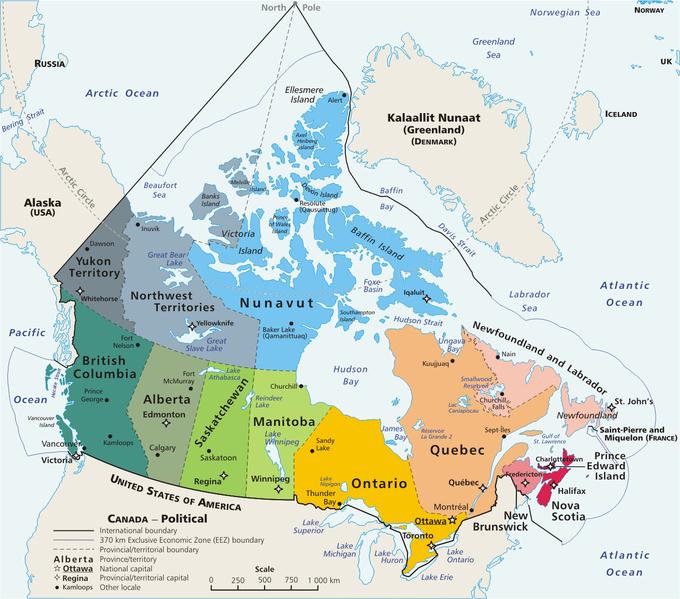
Climate
Canada has a diverse climate. The climate varies from temperate on the west coast of British Columbia to a subarctic climate in the north. Extreme northern Canada can have snow for most of the year with a Polar climate. Landlocked areas tend to have a warm summer continental climate zone with the exception of Southern Ontario which has a hot summer humid continental climate. Parts of Western Canada have a semi-arid climate, and parts of Vancouver Island can even be classified as cool summer Mediterranean climate. Temperature extremes in Canada range from 45.0 °C (113 °F) in Midale and Yellow Grass, Saskatchewan on July 5, 1937 to -63.0 °C (-81.4 °F) in Snag, Yukon on Monday, February 3, 1947.
Canada’s Economy
Canada has the eleventh (nominal) or 14th-largest (PPP) economy in the world, is one of the world's wealthiest nations, and is a member of the Organization for Economic Co-operation and Development (OECD) and Group of Seven (G7). Since the early 20th century, the growth of Canada's manufacturing, mining, and service sectors has transformed the nation from a largely rural economy to an urbanized, industrial one. As with other developed nations, the Canadian economy is dominated by the service industry, which employs about three quarters of Canadians. Canada is unusual among developed countries in the importance of the primary sector, with the logging and oil industries being two of Canada's most important. Canada also has a sizable manufacturing sector, centred in Central Canada, with the automobile industry and aircraft industry especially important. With a long coastal line, Canada has the 8th largest commercial fishing and seafood industry in the world. Canada is one of the global leaders of the entertainment software industry.
Canada is one of the few developed nations that are net exporters of energy. Atlantic Canada possesses vast offshore deposits of natural gas, and Alberta also hosts large oil and gas resources. The vastness of the Athabasca oil sands and other assets results in Canada having 13% of the global oil reserves, the world's third-largest, after Venezuela and Saudi Arabia. Canada is additionally one of the world's largest suppliers of agricultural products; the Canadian Prairies are one of the most important global producers of wheat, canola, and other grains. The Ministry of Natural Resources in Canada provides statistics regarding their major exports, zinc and uranium, and is a leading exporter of many other minerals, such as gold, nickel, aluminum, steel, iron ore, Coking Coal, and lead. Many towns in northern Canada, where agriculture is difficult, are sustainable because of nearby mines or sources of timber. Canada also has a sizeable manufacturing sector centred in southern Ontario and Quebec, with automobiles and aeronautics representing particularly important industries.
Canada has a private to public (Crown) property ratio of 60:40 and one of the highest levels of economic freedom in the world. Today Canada closely resembles the U.S. in its market-oriented economic system and pattern of production. As of February 2013, Canada's national unemployment rate stood at 7.0%, as the economy continues its recovery from the effects of the financial crisis of 2007–08. In May 2010, provincial unemployment rates varied from a low of 5.0% in Saskatchewan to a high of 13.8% in Newfoundland and Labrador. According to the Forbes Global 2000 list of the world's largest companies in 2008, Canada had 69 companies in the list, ranking 5th next to France.
In 1994, the North American Free Trade Agreement (NAFTA) came into effect, creating one of the world's largest free trade zones and laying the foundations for strong economic growth and rising prosperity for Canada, the United States, and Mexico. The North American Free Trade Agreement is an agreement signed by Canada, Mexico, and the United States, creating a trilateral rules-based trade bloc in North America. The agreement signed on January 1, 1994. It replaced the Canada–United States Free Trade Agreement between the U.S. and Canada. NAFTA has two supplements: the North American Agreement on Environmental Cooperation (NAAEC) and the North American Agreement on Labor Cooperation (NAALC).
Official Languages of Canada
A multitude of languages are used in Canada. According to the 2011 census, English and French are the mother tongues of 56.9% and 21.3% of Canadians respectively. Over 85% of Canadians have working knowledge of English while only 30.1% have a working knowledge of French. This is partly due to many French-speaking Canadians learning English and to more immigrants choosing to learn English as their second language rather than French. Under the Canadian Constitution, the federal government has both English and French as its official languages in respect of all government services, including the courts and all federal legislation is enacted bilingually. New Brunswick is the only Canadian province that has both English and French as its official languages to the same extent, with constitutional entrenchment. Quebec's official language is French, although in that province, the Constitution requires that all legislation be enacted in both French and English, and court proceedings may be conducted in either language. Similar constitutional protections are in place in Manitoba.
Canada’s linguistic diversity extends beyond the two official languages. "In Canada, 4.7 million people (14.2% of the population) reported speaking a language other than English or French most often at home and 1.9 million people (5.8%) reported speaking such a language on a regular basis as a second language (in addition to their main home language, English or French). In all, 20.0% of Canada's population reported speaking a language other than English or French at home. For roughly 6.4 million people, the other language was an immigrant language, spoken most often or on a regular basis at home, alone or together with English or French whereas for more than 213,000 people, the other language was an Aboriginal language. Finally, the number of people reporting sign languages as the languages spoken at home was nearly 25,000 people (15,000 most often and 9,800 on a regular basis)."
Canada is also home to many indigenous languages. Taken together, these are spoken by less than one percent of the population. About .6% Canadians (or 200,725 people) report an Aboriginal language as their mother tongue.
Islam in Canada
According to Canada's 2011 National Household Survey, there were 1,053,945 Muslims in Canada or about 3.2% of the population, making them the second largest religion after Christianity and the fastest growing religion in Canada. In the Greater Toronto Area, 7.7% of the population is Muslim, making GTA the highest concentration of Muslims in any city in North America. A majority of the Muslim population in Canada follow Sunni Islam, while a significant minority adheres to the Shia and Ahmadiyya branch. The majority of Canadian Muslims live in the province of Ontario, and especially in and around the Greater Toronto Area.
Most Canadian Muslims are people who were raised Muslim. As with immigrants in general, Muslim immigrants have come to Canada for a variety of reasons. These include higher education, security, employment, and family re-unification. Others have come for religious and political freedom, and safety and security, leaving behind civil wars, persecution, and other forms of civil and ethnic strife.
Iranians of Canada
The first Iranians arrived in Canada in the early part of the 20th century. The number of People with Iranian descent are estimated as 121,510 from the 2006 Canadian census and the main communities can be found in Southern Ontario, British Columbia, and Quebec; the vast majority, however, live in the northern suburbs of Toronto such as Richmond Hill, Vaughan, Markham, and Thornhill, and in the municipalities of Vancouver such as: North Vancouver, West Vancouver, Burnaby, and Coquitlam. An estimated total of 46,255 Iranians currently reside in the Greater Toronto Area, 29,265 in the Greater Vancouver Area, 9,535 in the Greater Montreal Area, and the remainders are spread out in the other major cities in Canada based on the 2006 Canadian Census.
However, these numbers only represent the people who immigrated from Iran and filled out the census survey. There are an estimated 50,000 more Iranians who did not fill out the survey and were born outside Iran including Canada. Estimated numbers for Toronto are around 65,000, in Vancouver they range up to 40,000 and in Montreal there are not more than 15,000.
Canadian Television Channels
CBC Television: a national public network owned by the Canadian Broadcasting Corporation (CBC). It broadcasts in English, French and in Aboriginal languages in the territories and northern regions of Québec and Labrador.
CBC North: a publicly owned television system run by the CBC operating in the territories, northern Quebec and Labrador, airing the complete CBC Television schedule with a few exemptions to local programming.
City: a privately owned television network with stations in Quebec, Ontario, Manitoba, Saskatchewan, Alberta and British Columbia. It is owned by Rogers Communications.
CTV Television Network: a national private network (except for Newfoundland & Labrador and the territories) owned by Bell Media broadcasting in English.
CTV Atlantic: a privately owned network of stations airing the complete CTV network schedule within Nova Scotia, New Brunswick and Prince Edward Island owned by Bell Media.
CTV Northern Ontario: a privately owned network of stations airing the complete CTV network schedule within Northern Ontario owned by Bell Media.
Global Television Network: a national private network (except for Newfoundland & Labrador and the territories) owned by Shaw Media broadcasting in English.



